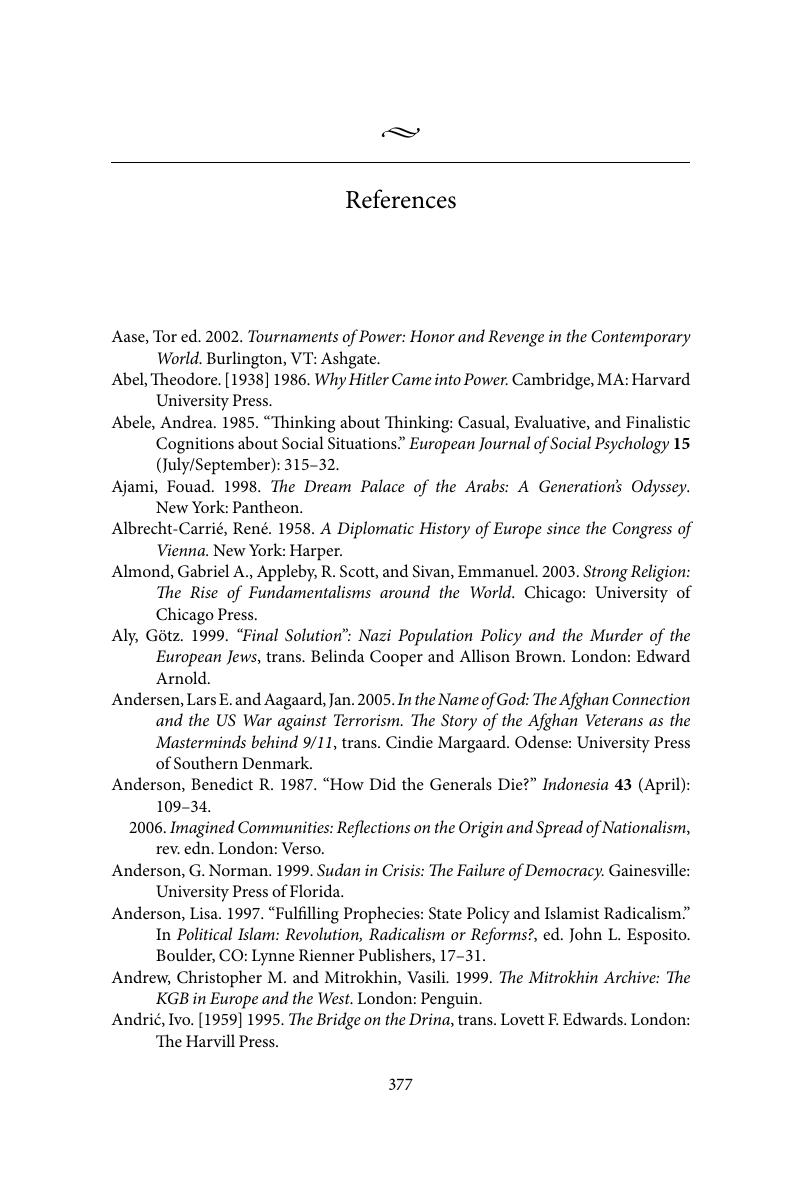References
Published online by Cambridge University Press: 05 June 2012
Summary

- Type
- Chapter
- Information
- Origins of Political ExtremismMass Violence in the Twentieth Century and Beyond, pp. 377 - 406Publisher: Cambridge University PressPrint publication year: 2011

